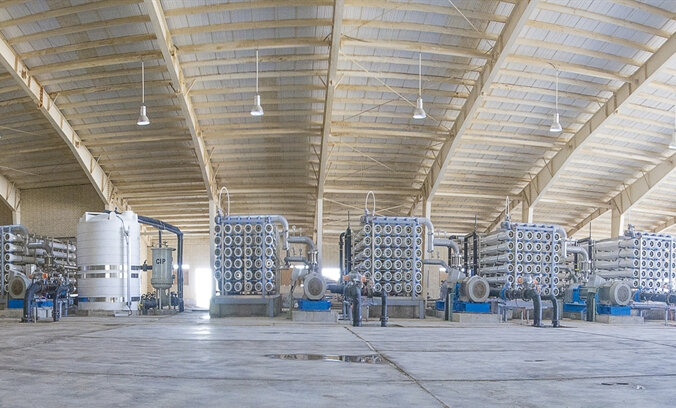75 water desalination plants operating across Iran

TEHRAN – Iran’s National Water and Wastewater Engineering Company is operating and constructing 95 water desalination plants with a total capacity of 634,000 cubic meters per day across the country, of which 75 plants are currently operational, according to an official with the company.
Speaking to the Energy Ministry’s news portal Paven, Fariba Golrizan the financial director of National Water and Wastewater Engineering Company, said that over 38.5 trillion rials (about $138.5 million) has been invested in the mentioned 95 projects.
Stating that about three percent of the country's drinking water is supplied through water desalination plants, she said: “Over 92 percent of the country’s water desalination plants are located in Hormozgan, Bushehr, Sistan-Baluchistan and Khuzestan provinces.”
According to the official, most of the country’s desalination plants are operated by the private sector which sell their produced water to the Energy Ministry through long-term contracts.
She noted that, on average, about 98,000 rials (over $0.35) was spent to produce a cubic meter of water by the county’s water desalination facilities in the previous Iranian calendar year (ended on March 20), which was paid to the contractors by the government.
The official further noted that the government plans to support the country’s desalination companies to increase their output.
“Based on the government's plan to develop the capacity of water desalination plants and to expand the use of these facilities, over the next four years, at least 400,000 cubic meters per day will be added to the capacity of the country's water desalination plants,” Golrizan said.
She also mentioned the projects for transferring the Persian Gulf water to central provinces and said: “In addition to the desalination plant projects, there are also large water transfer projects, which are primarily implemented with the aim of supplying water to the industrial sector, however, when there is a need for drinking water, this capacity can be used and will be used in the future.”
EF/MA
